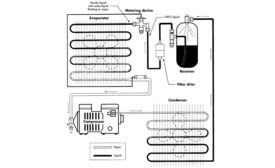Articles by John Tomczyk
What was once an alternative refrigerant is now an industry mainstay
Read More
What’s Happening With R-134a?
Here are some alternatives to replace the venerable but high-GWP refrigerant
Read More
What’s the Latest with R-404A?
As another industry workhorse feels the GWP crunch, contractors look at alternatives
Read More
Oil in the Evaporator — Not Very Slick
An evaporator internally saturated with refrigerant oil causes many system headaches
Read More
Inside Filter Driers
These valuable components keep systems clean but can become restricted themselves
Read More
The Symptoms of a Restricted TXV
How to identify when a liquid-line restriction is starving a system of refrigerant
Read More
The Professor: The Perils of Overcharging
Too much refrigerant can cause a number of system issues
Read More
The Professor: Cheers to Frozen Alcohol Treats
A new process allows alcohol to be frozen at household freezer temps
Read More
The Professor: Controlling Head Pressure with a Split Condenser
A reliable way to reduce the extra refrigerant charge needed for condenser flooding
Read More
The Professor: A Toast to Decorative Spherical Ice
Ice is a serious business, but it can also be fun and creative
Read More
Copyright ©2024. All Rights Reserved BNP Media.
Design, CMS, Hosting & Web Development :: ePublishing










